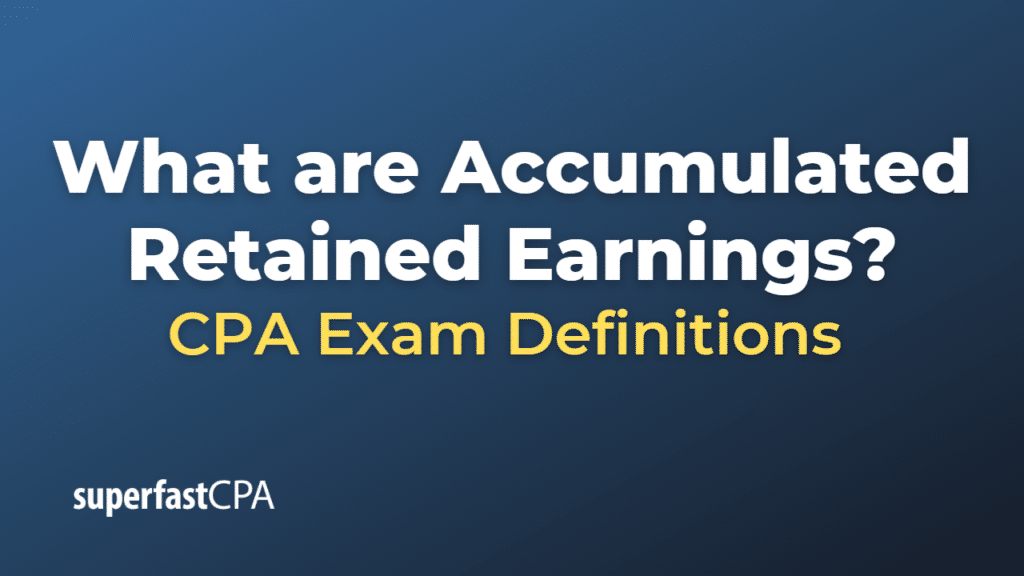Accumulated Retained Earnings
Accumulated retained earnings refer to the cumulative sum of a company’s net income that has been retained, rather than distributed to shareholders as dividends, since its inception. Retained earnings are used to reinvest in the company’s operations, fund expansions or acquisitions, pay off debts, or save for future use. This account is an equity account, and it is reported in the shareholders’ equity section of the company’s balance sheet.
Accumulated retained earnings can be positive, reflecting the company’s ability to generate profits over time, or negative, called an accumulated deficit, which indicates the company has consistently incurred losses.
Accumulated retained earnings are calculated as follows:
Beginning Retained Earnings + Net Income (or Loss) – Dividends Paid = Ending Retained Earnings
Example of Accumulated Retained Earnings
Here’s an example of how to calculate accumulated retained earnings:
Suppose Company XYZ has the following financial data:
- Beginning retained earnings: $100,000
- Net income for the year: $50,000
- Dividends paid to shareholders: $20,000
To calculate the accumulated retained earnings at the end of the year, we can follow this formula:
Ending Retained Earnings = Beginning Retained Earnings + Net Income – Dividends Paid
Plugging in the values:
Ending Retained Earnings = $100,000 + $50,000 – $20,000
Ending Retained Earnings = $130,000
At the end of the year, Company XYZ’s accumulated retained earnings are $130,000, which reflects the amount of earnings retained in the company after paying $20,000 in dividends.













